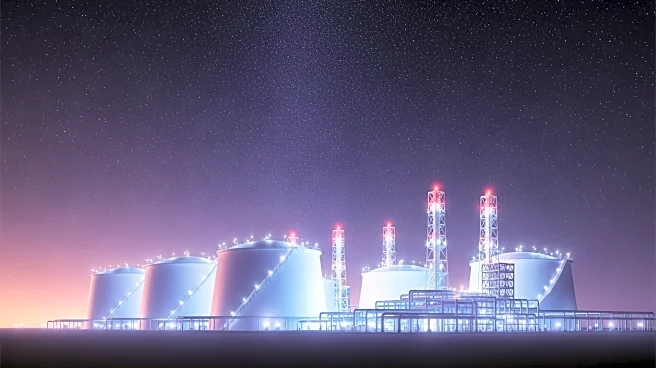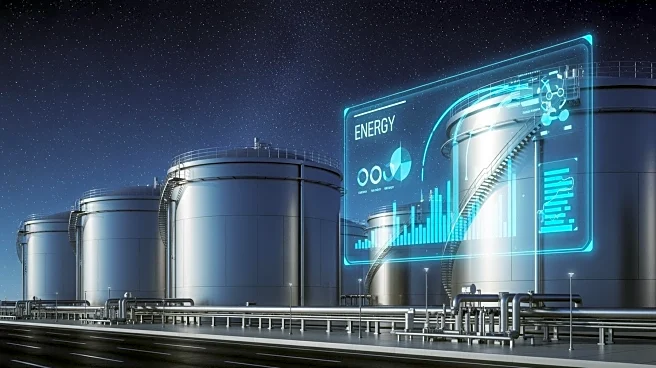What's Happening?
NextDecade Corporation, a U.S. LNG developer, has announced a $6.7 billion investment to expand its Rio Grande LNG facility in Texas. This expansion includes the construction of Train 5, which is expected to produce approximately 6 million tonnes per annum
(MTPA) of LNG. The project is supported by 20-year LNG sales agreements with companies such as JERA, EQT Corporation, and ConocoPhillips. The expansion is part of a broader trend in the U.S. LNG sector, which has been invigorated by the Trump Administration's reversal of previous pauses on new LNG project approvals. The expansion is expected to significantly increase the facility's total production capacity to about 30 MTPA.
Why It's Important?
The expansion of the Rio Grande LNG facility is a significant development in the U.S. energy sector, as it enhances the country's LNG export capacity. This move is likely to strengthen the U.S.'s position in the global LNG market, providing a boost to domestic energy production and potentially leading to increased economic activity in the region. The investment also reflects the current favorable regulatory environment for LNG projects in the U.S., which could encourage further investments and expansions in the sector. This development is crucial for stakeholders in the energy industry, including investors, energy companies, and regional economies that stand to benefit from increased production and export activities.
What's Next?
The construction of Train 5 is expected to be completed with a substantial completion date and first commercial delivery anticipated in the first half of 2031. As the U.S. continues to expand its LNG export capacity, more projects are expected to reach final investment decisions in the coming years. The Energy Information Administration projects an addition of 5 billion cubic feet per day in LNG export capacity by 2025 and 2026, indicating a robust growth trajectory for the U.S. LNG sector. This expansion could lead to increased competition in the global LNG market and potentially influence global energy prices.














